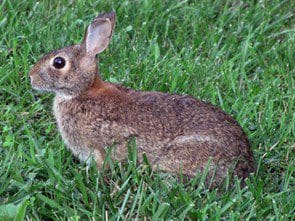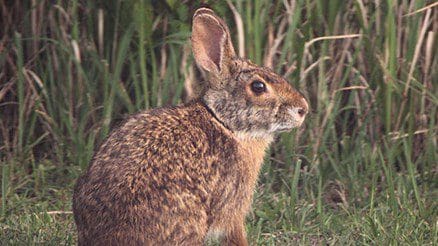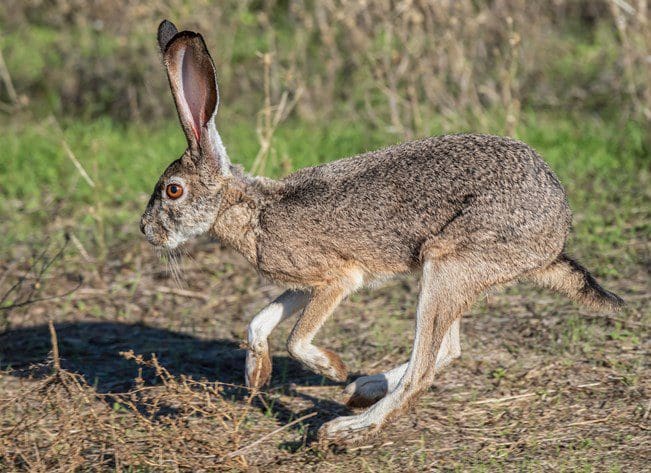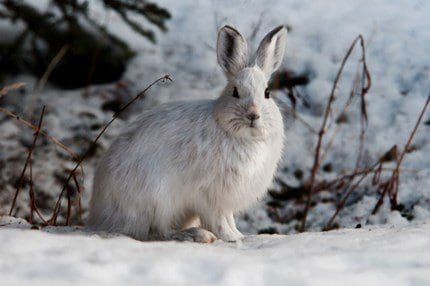Easter Season Signals Rabbit Season
Tags:

Easter Season Signals Rabbit Season – NRA Women.com
This might be the year you start a new family tradition—rabbit hunting.
Why is the Easter bunny a symbol of Easter? Where did the Easter bunny get its origin? Is the Easter bunny a Christian symbol? Why does the Easter bunny deliver Easter eggs? Where do Easter lilies fit in? The Easter bunny has been associated with the Christian holiday of Easter for hundreds of years. It seems very few individuals know what the Easter symbols represent.
The Easter bunny has its origin as a German pagan symbol from late 1500s to the mid 1600s. The rabbit is the pagan symbol for springtime, representing birth and renewal. Easter eggs on the other hand have more religious beginnings. Eggs are part of the Jewish holiday of Passover. Eggs were a part of the Passover Seder Plate of the Last Supper, a tradition that is still followed. Easter lilies appear as a result of the springtime showers in Germany, hence the old saying, “April showers bring May flowers.†In ancient Germany, the May flowers signals the birth of rabbits. This also signaled that it was time to go hunting for rabbits.
It was in 1682 that Georg Frank von Franchenau’s essay De ovis paschalibus (on the Easter egg) put all the symbols together. He combined Jesus’ celebrating the Passover Seder meal on Thursday, his crucifixion on Friday, and his rising from the dead three days later on Easter Sunday. The Easter bunny delivering brightly colored eggs, toys and flowers became a Christian holiday symbol of Easter.
The abundance of rabbits in early spring signals the start of a new crop of animals. Deer fawn, elk have their calves, and other game animals give birth to their young.
Rabbit hunting is very popular in some parts of the United States. There are two animals that we collectively call rabbits: rabbits and hares. Both are hunted for food and sport. Hares are larger than rabbits and have larger ears and legs. Hares also have coarser hair than rabbits and live alone or in pairs, and have above ground nests. Young hares are called leverets and are born fully furred with their eyes open. Rabbits are smaller and have smaller ears and legs than hares. Their hair is softer than hares and live in groups or colonies in underground tunnels. Young rabbits are called bunnies and are born without fur and with their eyes closed.

Cottontail Rabbits
Cottontail rabbits are the most widely distributed rabbits in North America. Male cottontail rabbits are called bucks and female cottontail are called does. The does can have up to four litters a year. Their litter size is between four and eight bunnies. This means that there are a lot of rabbits available to the hunter. There are eight subspecies of cottontail rabbits in North America.

Eastern Cottontail (Sylvilagus floridanus) — The eastern cottontail can be found in open areas with shrubs in the eastern and south-central United States. It ranges from southern Canada. The eastern cottontail rabbit is the most abundant rabbit found in the United States.
Desert Cottontail (Sylvilagus audubonii) — The desert cottontail is found throughout the Western United States. It ranges from eastern Montana to western Texas. It prefers open areas with clumps of brush to hide in.
Mountain Cottontail (Sylvilagus nuttallii) — The mountain cottontail is found in the western United States in mountain habitats. It ranges from the north western mountain areas of Montana and Wyoming to Arizona and New Mexico. The mountain cottontail can be found as far east as North and South Dakota.
Swamp Rabbits (Sylvilagus aquaticus) — The swamp rabbit is found in central United States, including the Gulf coast states. The swamp rabbit is most abundant in Alabama, Mississippi, and Louisiana. It can also be found in South Carolina, Tennessee, Texas, Oklahoma, Missouri, Kentucky, Illinois, Indiana, and Georgia.

Marsh Rabbit (Sylvilagus palustris) — The marsh rabbit ranges from Virginia, down the eastern coast to northern Florida. The marsh rabbit also can be found along and the Gulf Coast. It prefers coastal lowland areas, swamps, and rivers and is rarely found more than forty miles from the coast.
New England Cottontail (Sylvilagus transitionalis) — New England cottontails live in the northeastern region of the United States
Appalachian Cottontail (Sylvilagus obscurus) — The Appalachian cottontail is a small rabbit in the eastern mountains of the United States. The Appalacian Mountains, Blue Ridge Mountains, and other hilly and mountainous areas are preferred habitats of this rabbit.
Brush Rabbit (Sylvilagus bachmani) — The western brush rabbit, also known as the Californian brush rabbit, is found in western coastal regions of North America. It ranges from the Columbia River in Oregon to the southern tip of the Baja California Peninsula.

Jackrabbits and Hares
Jackrabbits and hares are usually associated with the deserts and western regions of the United States. The first time you see a jackrabbit, you will have to take a double look. They are huge! They also make for great sport hunting. They can run up to 40 miles per hour and jump 10 feet high.
Antelope Jackrabbit (Lepus alleni)— The antelope jackrabbit is the most recognizable jackrabbit in the United States. It can stand up to two feet tall with very long ears that stand straight up. This remarkable “rabbit†is a species of North American hare found in southwestern United States. They range from Texas to California. They can also be found throughout the western plains.
Snowshoe Hare (Lepus americanus) — Snowshoe hares can be from Newfoundland to Alaska. They are also found in Nevada, California, and in the Rocky Mountains. They can also be found as far east as the Appalachian Mountains.
Arctic Hare (Lepus arcticus) — The arctic hare is distributed over the northernmost regions of North America. They are found throughout Greenland, the Arctic Circle.
Alaskan Hare (Lepus othus) — The Alaskan hare is found in the Western and Southwestern Alaska region. They are also found throughout the Alaskan Peninsula area.

This might be the year you start a new family tradition—rabbit hunting. Rabbit hunting can be very exciting, especially if you know someone with trained rabbit hunting beagles. Bag limits are usually very liberal with long hunting seasons. Some states such as Texas have year-round season and unlimited bag limits. Just remember, if you see a rabbit wearing a little vest and carrying a basket full of colorful eggs and Easter lilies, let it go!
